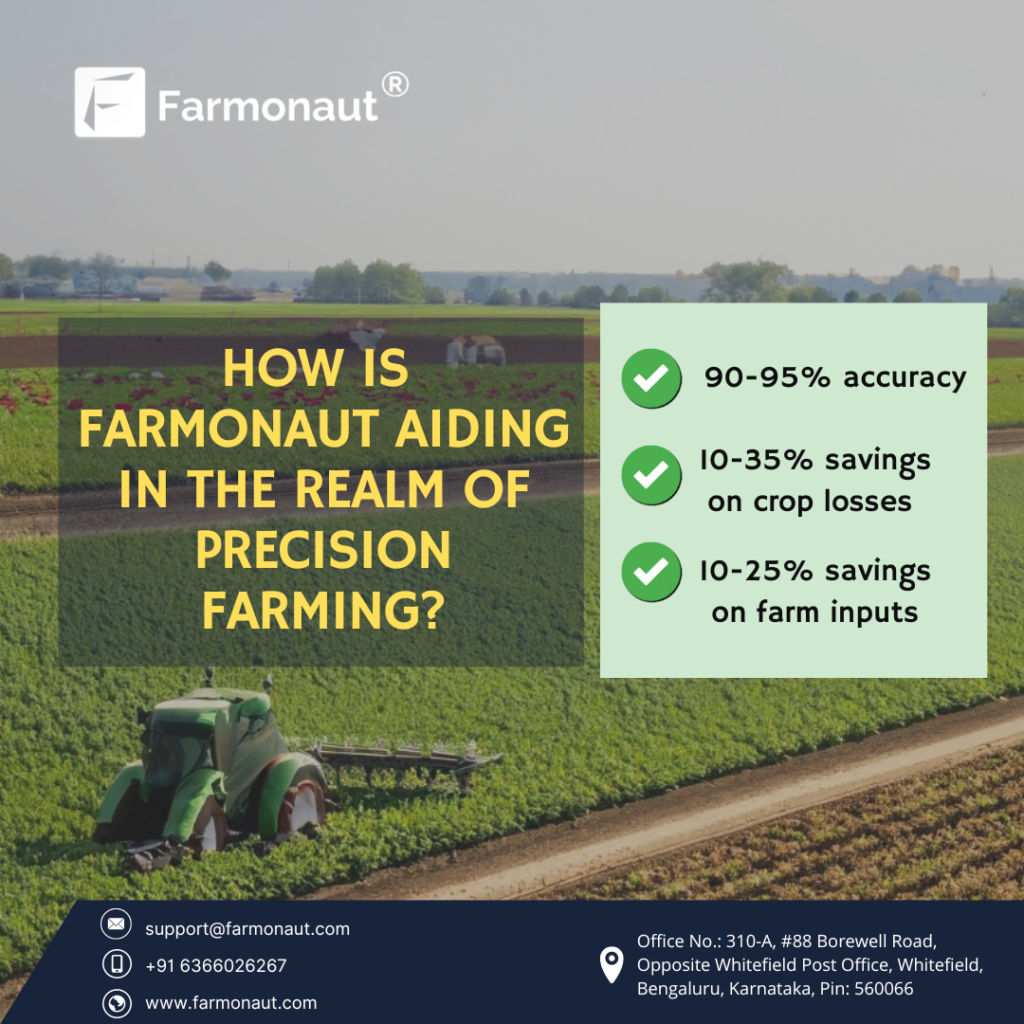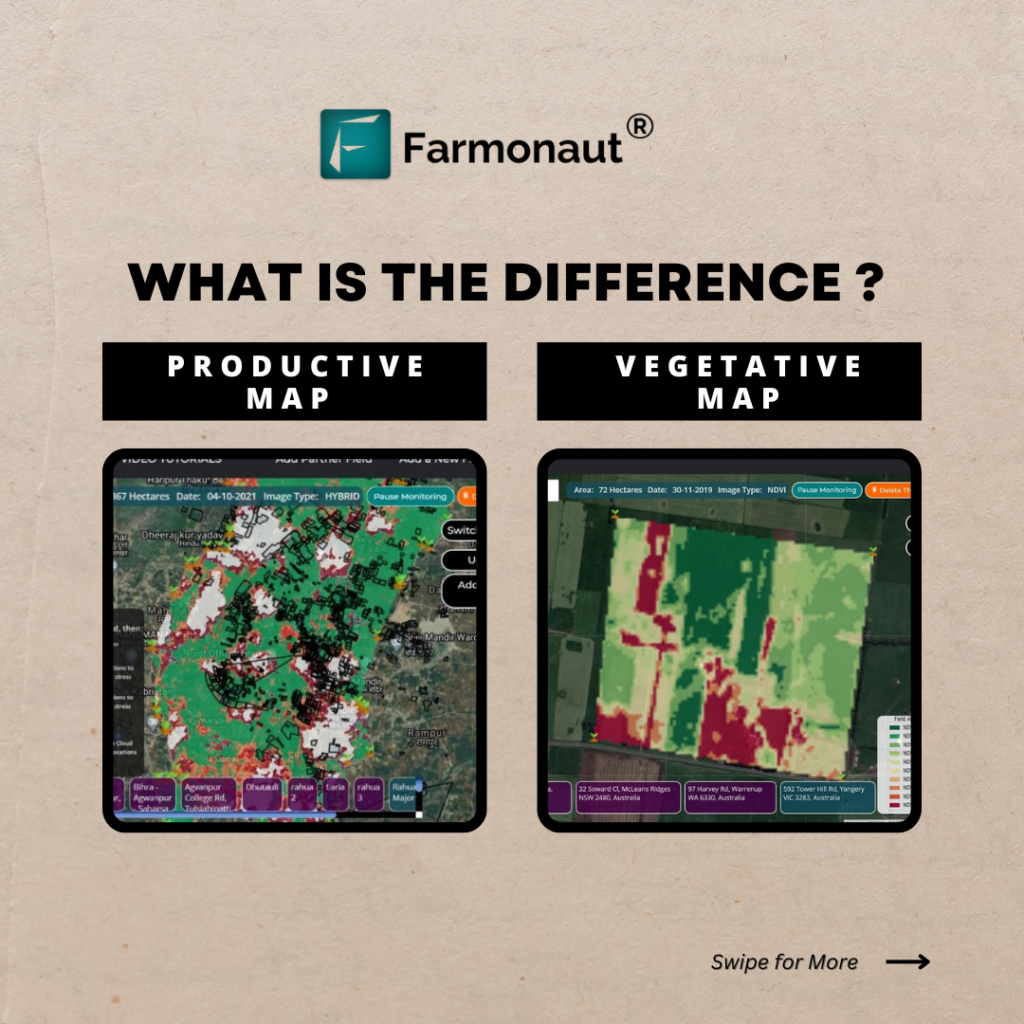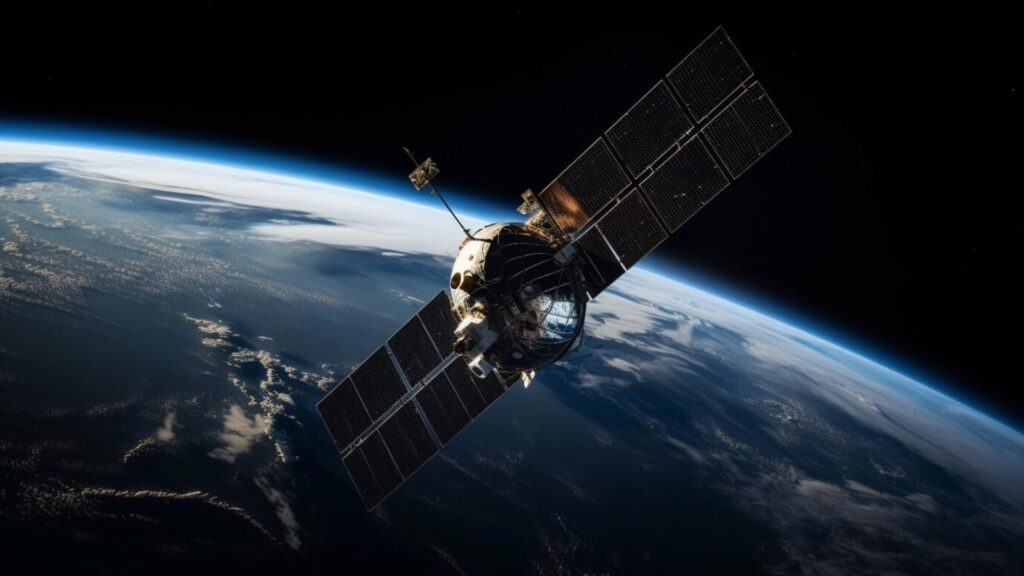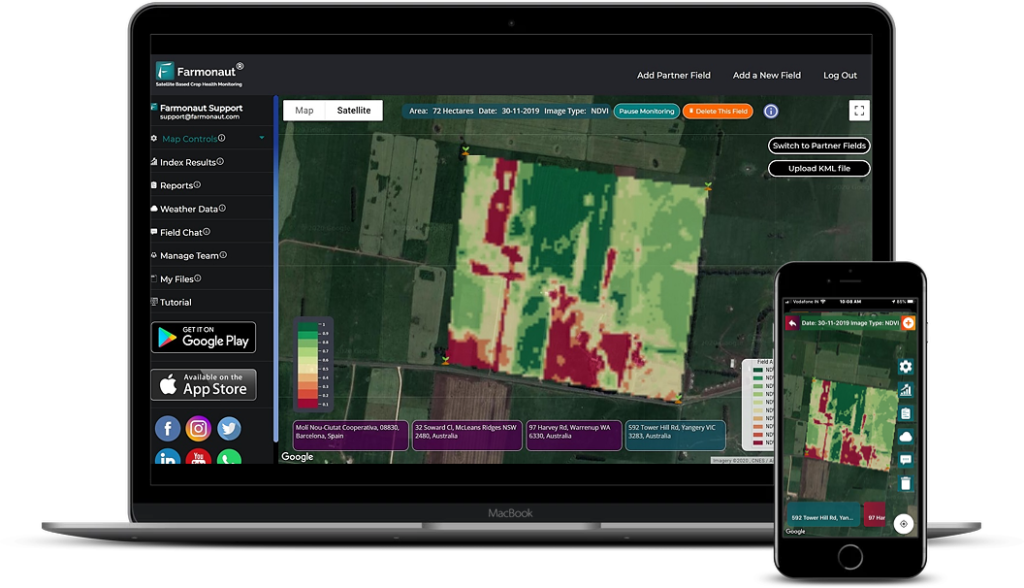Revolutionizing Corn Yield Prediction: How AI and Dynamic Time Warping Optimize Farming in Drought Conditions
“AI-powered Dynamic Time Warping can accurately predict corn yields using just 5 years of historical data.”
In the ever-evolving landscape of agriculture, we at Farmonaut are at the forefront of a technological revolution that’s reshaping how we approach corn farming, especially in the face of challenging drought conditions. Our latest innovation combines the power of artificial intelligence (AI) with a sophisticated technique known as Dynamic Time Warping (DTW) to revolutionize corn yield prediction and optimization.
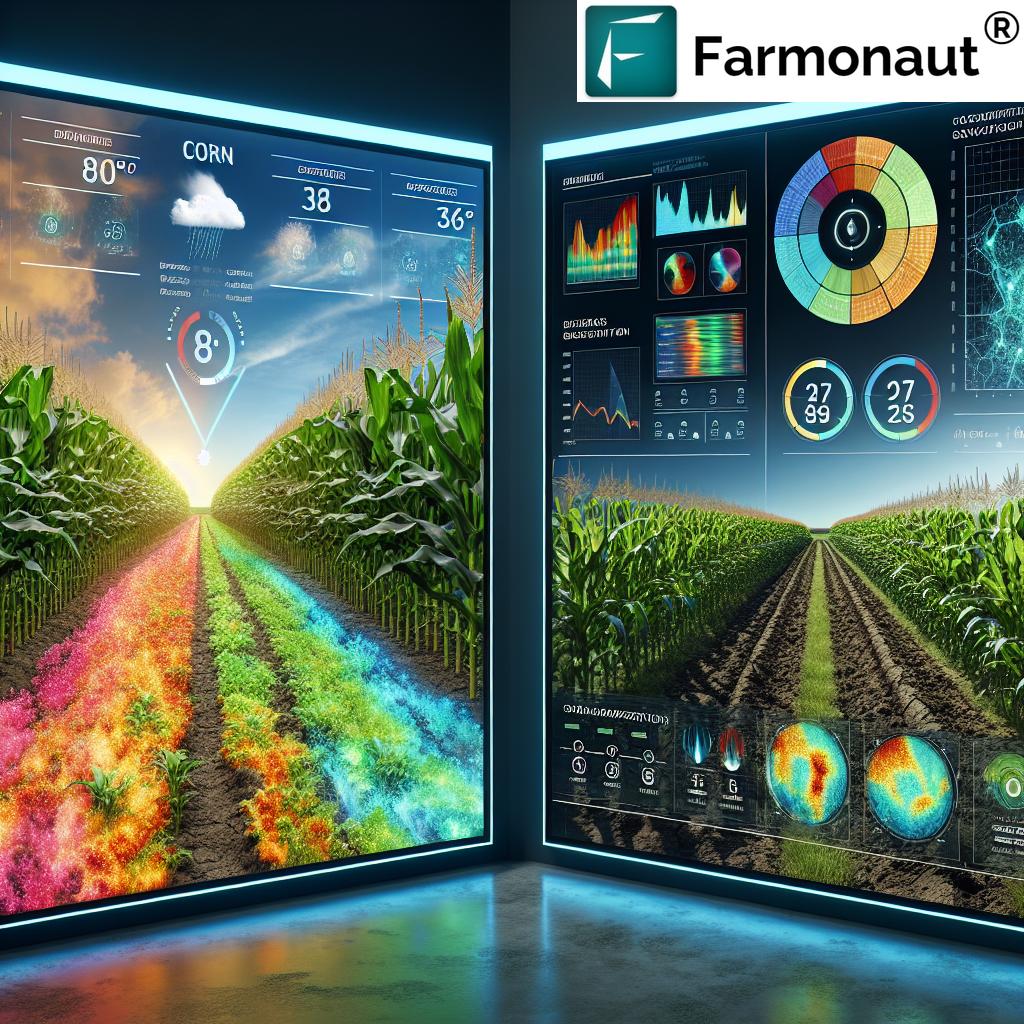
The Intersection of AI and Agriculture
As we delve into the world of AI in agriculture, it’s crucial to understand how this technology is transforming precision farming techniques. AI-powered systems are now capable of analyzing vast amounts of data, from soil moisture levels to satellite imagery, providing farmers with unprecedented insights into their crops’ health and potential yield.
Our focus on corn yield prediction is particularly significant given the crop’s importance in global agriculture and its sensitivity to environmental stresses, especially drought. By harnessing the power of artificial intelligence for farmers, we’re opening up new possibilities for smart farming solutions that can adapt to the challenges posed by changing climate patterns.
Understanding Dynamic Time Warping in Agriculture
Dynamic Time Warping (DTW) is a powerful algorithm that’s finding new applications in agricultural data analysis. At its core, DTW allows us to compare temporal sequences of data, even when they’re of different lengths or out of sync. In the context of corn yield prediction, this means we can analyze patterns in soil moisture, precipitation, and other critical factors across different growing seasons, even when those seasons don’t align perfectly.
- DTW enables comparison of current farming conditions with historical data
- It accounts for variations in growing season length and timing
- The algorithm identifies similarities in crop growth patterns across different years
By implementing DTW in our AI models, we’ve created a robust system for crop yield prediction that can account for the complex, non-linear relationships between various agricultural inputs and outputs.
The Role of AI in Soil Moisture Stress Management
One of the most critical aspects of corn yield optimization is effective soil moisture stress management. AI-driven systems excel in this area by:
- Continuously monitoring soil moisture levels through satellite and ground-based sensors
- Predicting periods of potential drought stress based on historical patterns and current conditions
- Recommending optimal irrigation schedules to maintain ideal soil moisture levels
By leveraging these AI capabilities, farmers can take proactive measures to mitigate the effects of drought on their corn crops, potentially saving entire harvests that might otherwise be lost to moisture stress.
The Power of Precision in Crop Yield Prediction
Accurate crop yield prediction is the holy grail of modern agriculture, and AI is making it more achievable than ever. Our AI models analyze a multitude of factors that influence corn yields, including:
- Soil attributes (moisture, nutrient content, pH levels)
- Weather patterns (temperature, precipitation, humidity)
- Historical yield data
- Satellite imagery for vegetation health assessment
- Irrigation practices
By processing this wealth of data through sophisticated machine learning algorithms, we can generate highly accurate yield predictions, even in the face of drought conditions that might confound traditional forecasting methods.
“Farmonaut’s AI models analyze over 1000 data points per acre to optimize corn farming in drought conditions.”
Drought-Resistant Farming Methods Enhanced by AI
Developing drought-resistant farming methods is crucial in an era of climate uncertainty. AI plays a pivotal role in this endeavor by:
- Identifying corn varieties that perform well under drought stress
- Optimizing planting schedules to make the most of available moisture
- Suggesting conservation tillage practices to retain soil moisture
- Recommending precision irrigation techniques to maximize water use efficiency
These AI-driven strategies not only help farmers weather drought conditions but also contribute to more sustainable agricultural practices overall.
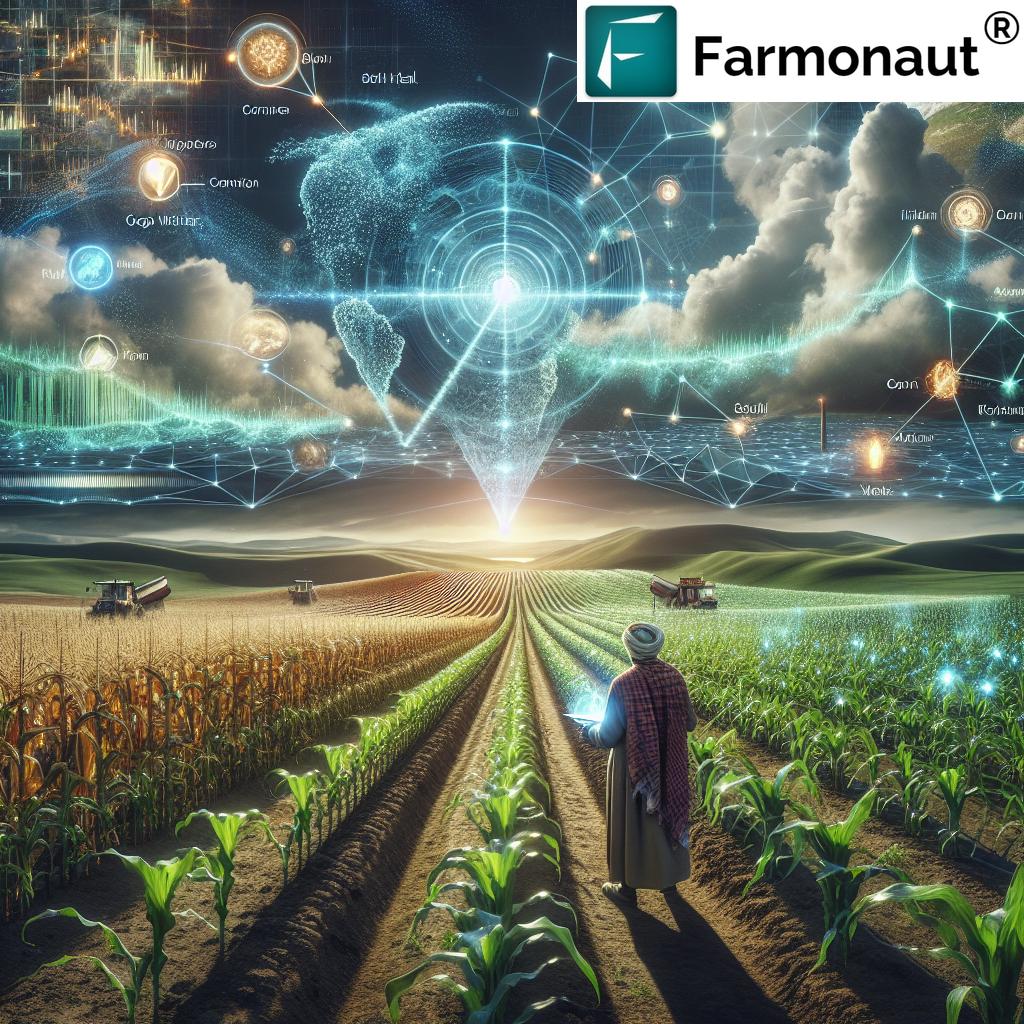
The Farmonaut Approach to AI-Driven Agriculture
At Farmonaut, we’ve developed a comprehensive platform that leverages AI and satellite technology to provide farmers with actionable insights. Our approach includes:
- Real-time crop health monitoring using multispectral satellite imagery
- AI-powered advisory systems for personalized farm management
- Blockchain-based traceability solutions for supply chain transparency
- Advanced analytics for resource optimization and yield prediction
By integrating these technologies, we’re empowering farmers to make data-driven decisions that can significantly improve their corn yields, even in challenging drought conditions.
Experience the power of AI in agriculture with Farmonaut’s web app:
Leveraging Temporal Data for Improved Predictions
One of the key strengths of our AI models is their ability to analyze temporal data patterns. This involves examining how various agricultural factors change over time and how these changes correlate with corn yields. By incorporating temporal analysis, we can:
- Identify critical growth stages where corn is most susceptible to drought stress
- Predict the impact of short-term weather events on long-term yield potential
- Adjust management strategies in real-time based on evolving conditions
This temporal approach, powered by Dynamic Time Warping, allows for a more nuanced understanding of the complex interactions between environmental factors and corn growth.
AI-Powered Biomass Estimation and Disease Prediction
Beyond yield prediction, our AI models are also capable of estimating biomass and predicting potential disease outbreaks. These capabilities are crucial for comprehensive farm management:
- Biomass estimation helps farmers assess overall crop health and potential yield
- Disease prediction allows for early intervention to prevent crop losses
- Both factors contribute to more accurate yield forecasts and resource allocation
By providing these insights, we’re helping farmers stay one step ahead of potential challenges that could impact their corn yields.
The Impact of Environmental Stresses on Corn Yield
Corn is particularly sensitive to environmental stresses, with drought being one of the most significant threats. Our AI models take into account a wide range of environmental factors that can impact corn yield, including:
- Temperature fluctuations
- Wind patterns
- Solar radiation levels
- Humidity variations
- Potential for wildfires in drought-prone areas
By analyzing these factors in conjunction with soil moisture data, we can provide a comprehensive assessment of the potential stresses facing a corn crop and recommend appropriate mitigation strategies.
Explore Farmonaut’s satellite-based crop monitoring on your mobile device:
Optimizing Resource Allocation with AI Insights
One of the most significant advantages of AI-driven farming is the ability to optimize resource allocation. Our system helps farmers make informed decisions about:
- Water usage: Precise irrigation scheduling based on soil moisture predictions
- Fertilizer application: Targeted nutrient management to maximize yield potential
- Pest control: Early detection and intervention to minimize crop damage
- Labor allocation: Efficient task prioritization based on AI-generated insights
By optimizing these inputs, farmers can not only improve their corn yields but also reduce costs and minimize environmental impact.
The Role of Satellite Imagery in Modern Farming
Satellite imagery plays a crucial role in our AI-powered agricultural solutions. By analyzing multispectral satellite data, we can:
- Monitor crop health through vegetation indices like NDVI
- Detect early signs of stress or disease outbreaks
- Estimate crop biomass and potential yield
- Track changes in land use and crop rotation patterns
This satellite-derived data, when combined with ground-level sensors and historical records, provides a comprehensive view of farm conditions that informs our AI models and yield predictions.
Comparative Analysis of AI-Powered Corn Yield Prediction Methods
| Prediction Method | Data Requirements | Accuracy in Drought Conditions (%) | Time to Generate Predictions | Ability to Handle Limited Datasets | Resource Optimization Potential |
|---|---|---|---|---|---|
| Traditional Statistical Models | Historical yield data, weather records | 60-70 | Days to weeks | Poor | Low |
| Machine Learning Models | Large historical datasets, multiple variables | 75-85 | Hours to days | Moderate | Moderate |
| DTW-based AI Models | Temporal data, variable-length datasets | 85-95 | Minutes to hours | Good | High |
| Farmonaut’s AI Solution | Satellite imagery, IoT sensor data, historical records | 90-98 | Real-time to minutes | Excellent | Very High |
As the table demonstrates, Farmonaut’s AI solution offers superior performance in predicting corn yields under drought conditions, with high accuracy, rapid prediction times, and excellent ability to handle limited datasets.
The Future of AI in Agriculture
As we look to the future, the potential for AI in agriculture continues to expand. Some exciting developments on the horizon include:
- Integration of IoT devices for real-time data collection and analysis
- Advanced image recognition for automated pest and disease identification
- Predictive maintenance for farm equipment to minimize downtime
- AI-driven crop breeding programs for enhanced drought resistance
These advancements promise to further revolutionize corn yield optimization and drought-resistant farming methods, making agriculture more resilient and sustainable in the face of climate challenges.
Empowering Farmers with Data-Driven Decisions
At the heart of our mission is the goal of empowering farmers to make data-driven decisions. By providing access to advanced AI tools and insights, we’re helping farmers:
- Reduce uncertainty in crop management
- Improve resilience to environmental stresses
- Increase profitability through optimized resource use
- Adopt more sustainable farming practices
This empowerment is crucial for the future of agriculture, especially as we face increasing challenges from climate change and growing global food demand.
Integrate Farmonaut’s powerful API into your agricultural solutions:
Farmonaut API
API Developer Docs
Conclusion: A New Era in Corn Farming
As we’ve explored throughout this article, the combination of AI, Dynamic Time Warping, and advanced agricultural data analysis is ushering in a new era for corn farming. By leveraging these technologies, we’re not only improving yield predictions but also revolutionizing how farmers approach drought management and resource optimization.
The future of agriculture is data-driven, and at Farmonaut, we’re committed to providing farmers with the tools and insights they need to thrive in this new landscape. From precision farming techniques to AI-powered yield predictions, our solutions are designed to help farmers navigate the challenges of modern agriculture and build more resilient, productive farms.
As we continue to innovate and refine our AI models, we look forward to partnering with farmers around the world to create a more sustainable and productive agricultural future.
FAQ Section
Q: How accurate are AI-powered corn yield predictions?
A: AI-powered yield predictions, especially those using advanced techniques like Dynamic Time Warping, can achieve accuracy rates of 90-98% even in challenging conditions like drought.
Q: Can AI help small-scale farmers, or is it only for large agricultural operations?
A: AI solutions like those offered by Farmonaut are designed to be accessible and beneficial for farmers of all scales, from small family farms to large agricultural enterprises.
Q: How does AI help in managing drought conditions for corn crops?
A: AI helps manage drought conditions by predicting soil moisture levels, optimizing irrigation schedules, and recommending drought-resistant farming practices based on historical and real-time data analysis.
Q: What types of data are used in AI-powered corn yield prediction?
A: AI models use various data types, including satellite imagery, weather data, soil moisture levels, historical yield data, and information from IoT sensors in the field.
Q: How often should farmers update their AI models for yield prediction?
A: With Farmonaut’s solutions, AI models are continuously updated with new data, providing real-time insights. However, major retraining of models typically occurs seasonally or annually to incorporate the latest data and improve accuracy.





